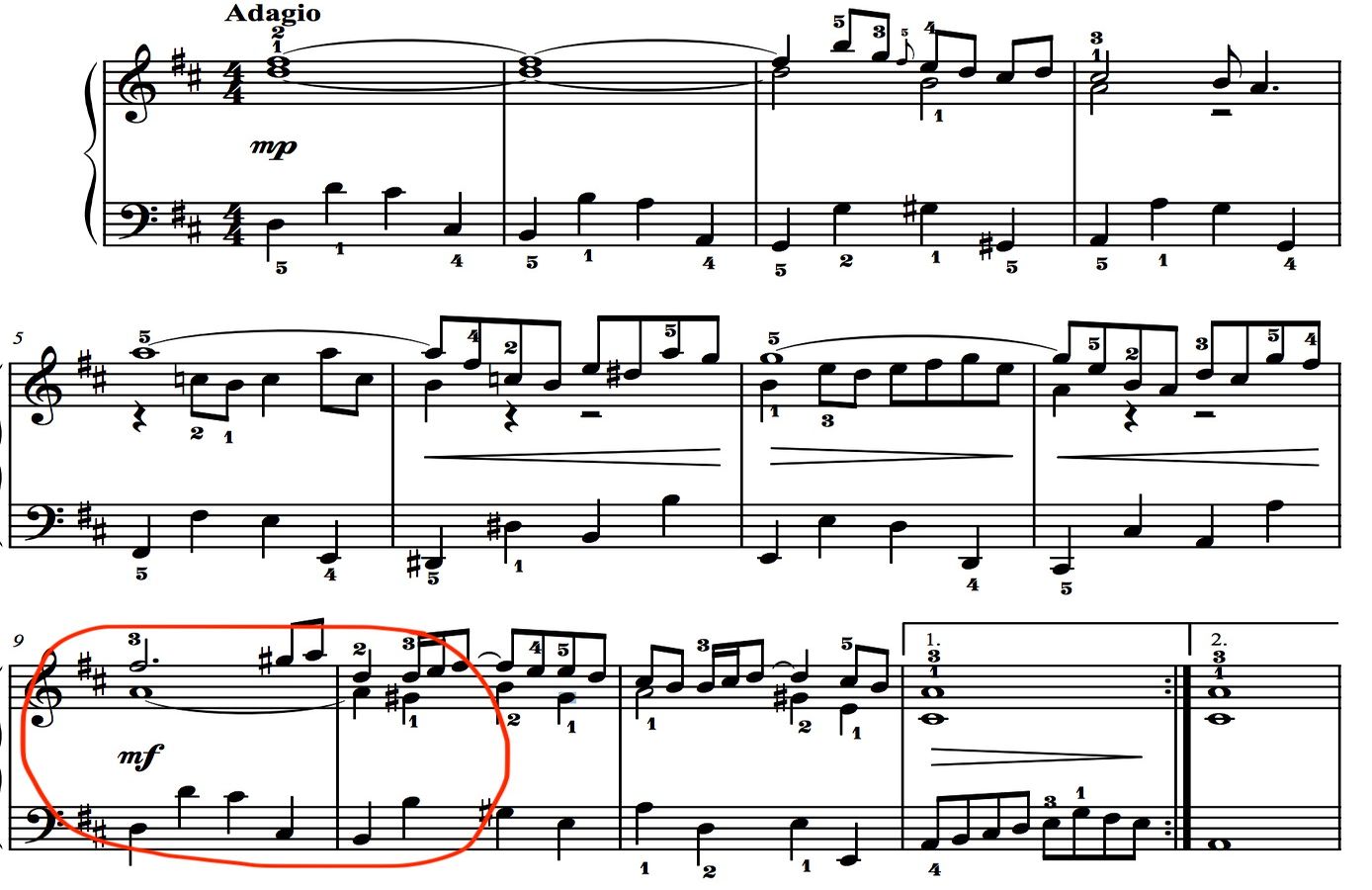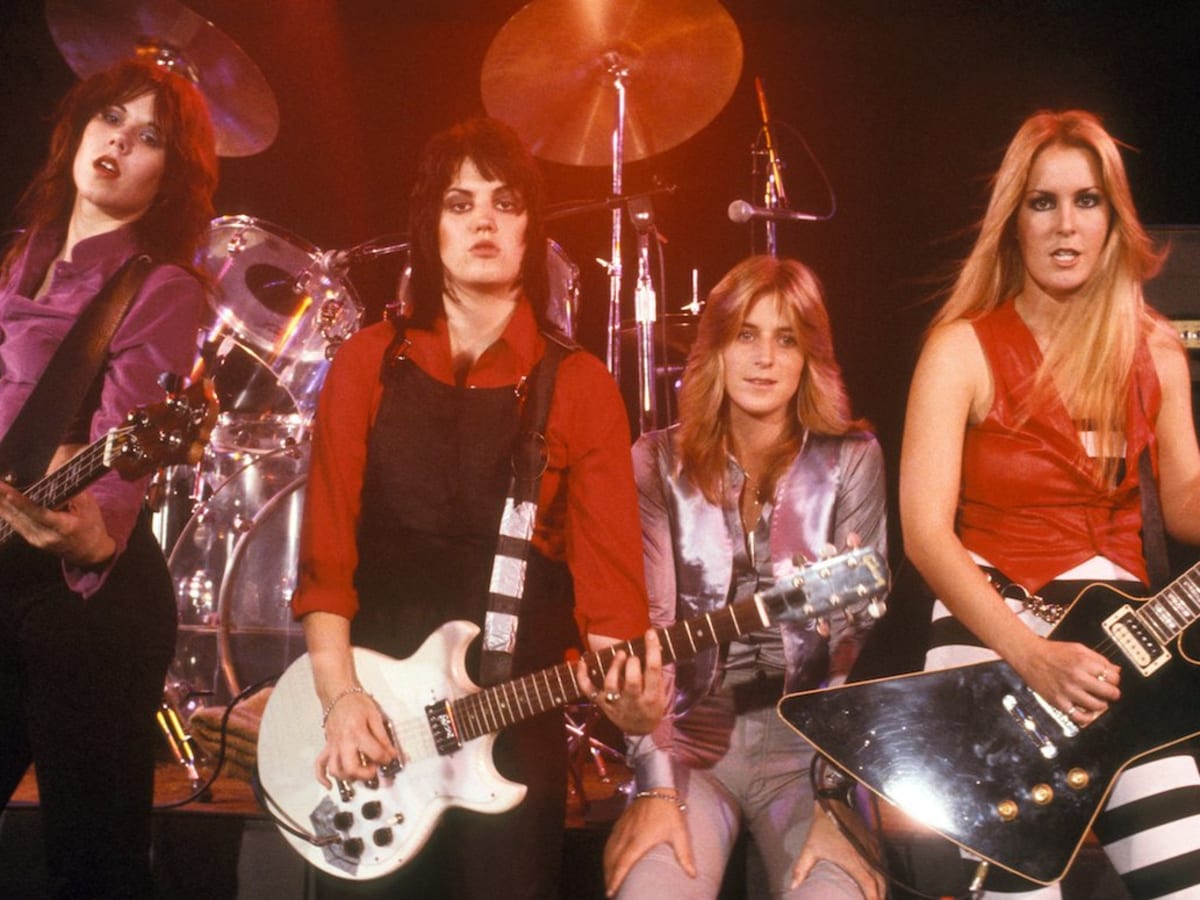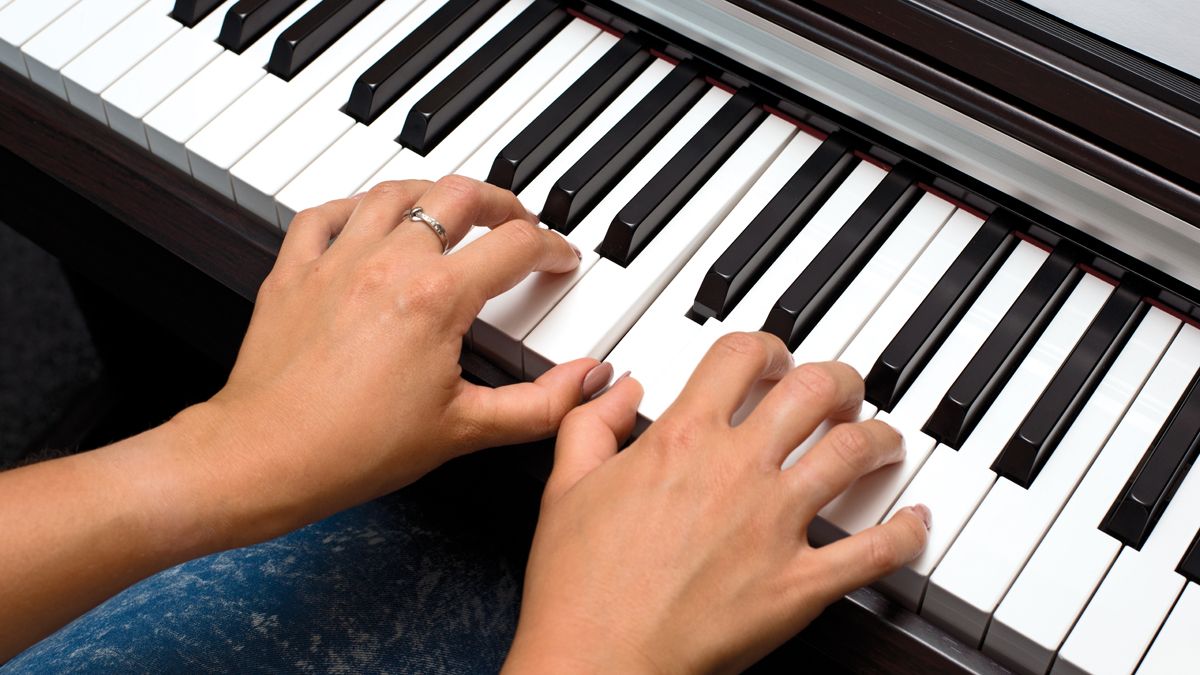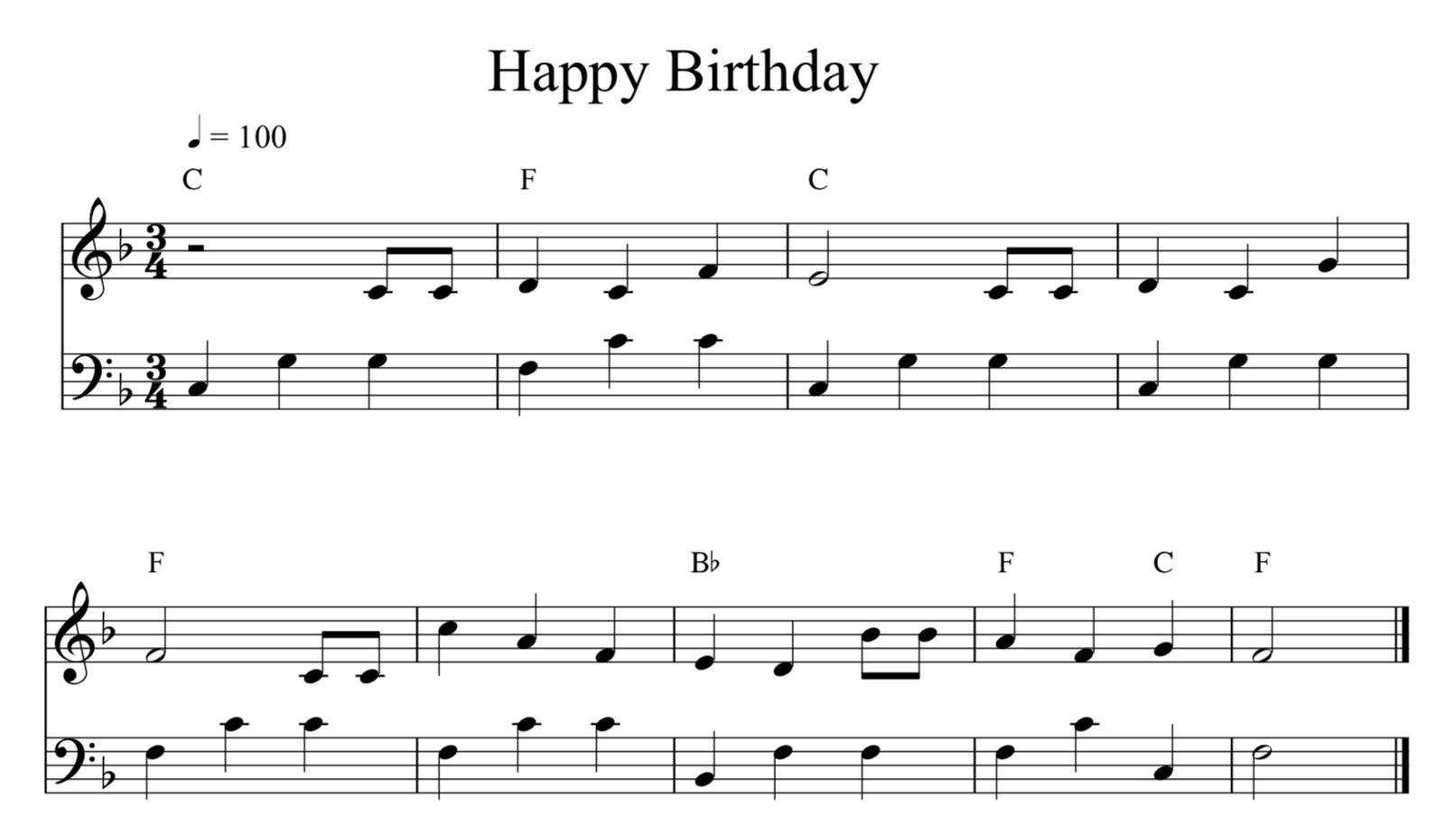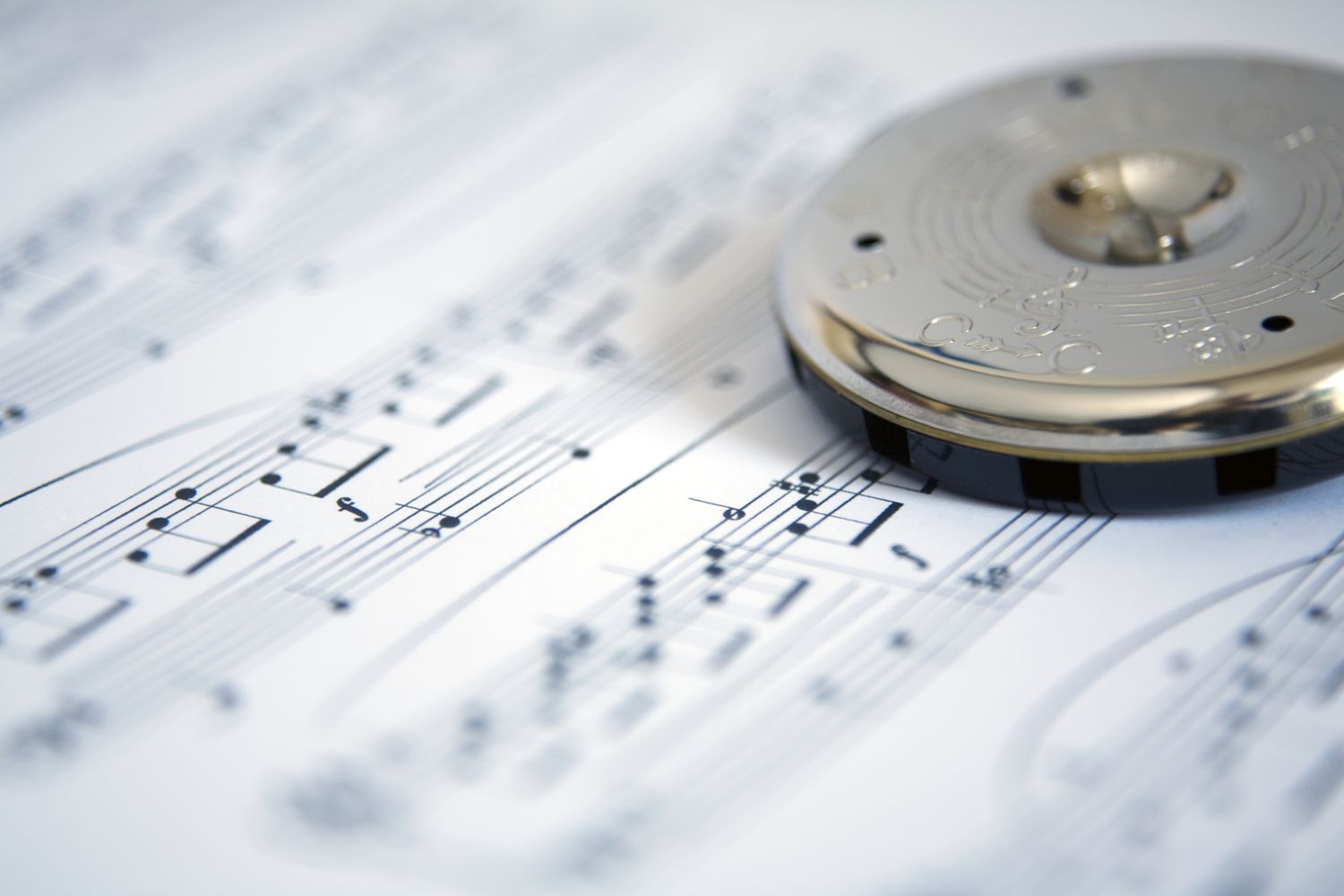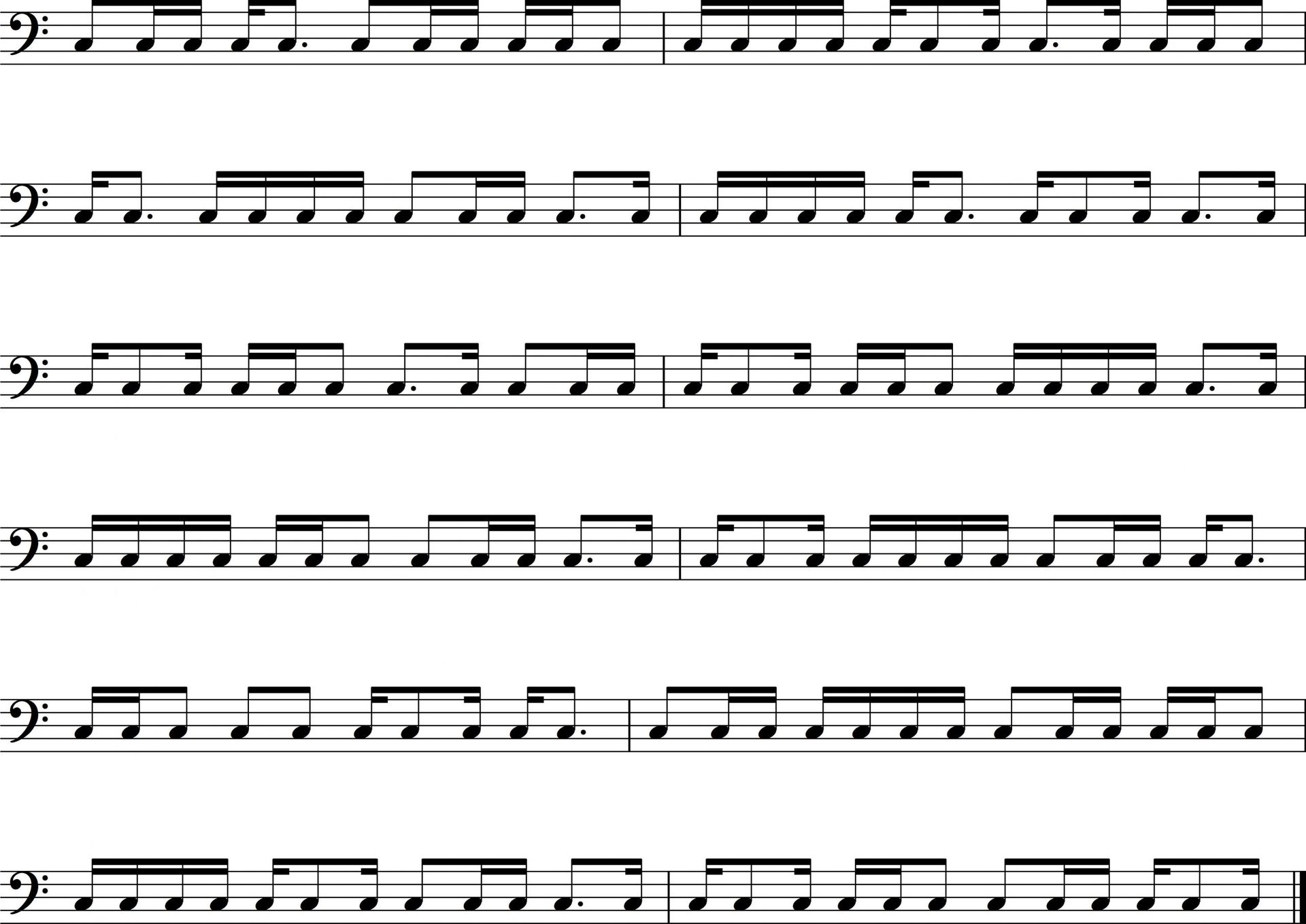Home>Events & Info>Note>What Are The Different Note Values In Music


Note
What Are The Different Note Values In Music
Published: December 4, 2023
Discover the various note values in music, including whole notes, half notes, quarter notes, and more. Expand your knowledge and understanding of musical notation.
(Many of the links in this article redirect to a specific reviewed product. Your purchase of these products through affiliate links helps to generate commission for AudioLover.com, at no extra cost. Learn more)
Table of Contents
Introduction
In the world of music, every note has a specific duration, or length. These durations are represented by different note values, which indicate how long a note should be played or held. Note values are an essential concept for musicians to understand, as they form the foundation for rhythm and timing in a musical composition. By recognizing and interpreting different note values, musicians can effectively communicate musical ideas and contribute to the overall performance.
Each note value is denoted by a unique symbol on a musical staff, and it corresponds to a specific fraction of a whole note. The most common note values encountered in music are the whole note, half note, quarter note, eighth note, sixteenth note, thirty-second note, and sixty-fourth note. Understanding these note values and how they relate to one another is crucial for musicians of all levels.
Throughout this article, we will explore each of these note values in detail and examine how they contribute to the rhythmic structure of a musical piece. We will also discuss rests, which indicate moments of silence in music and are equally important in establishing rhythm and musical timing.
Whole Note
The whole note is the longest note value in music. It is represented by an open oval shape on the musical staff. The whole note is also known as a semibreve in some musical traditions.
In terms of duration, the whole note is equivalent to four beats. It is the foundation upon which other note values are measured. When a whole note is played, it is held for the entire duration of four beats in a measure.
Visually, the whole note is unbroken, with no stems or flags attached to it. It stands out on the staff due to its unique shape, making it easily distinguishable from other note values.
When musicians encounter a whole note in a musical piece, it signals a sustained sound that lasts for a significant duration. It is often used in slower, more serene compositions, providing a sense of stability and grounding to the music.
Let’s say we are in 4/4 time signature, which means there are four beats per measure. If a whole note is played in this time signature, it would occupy the entire measure, with no other notes or rests played alongside it.
The whole note is a fundamental building block of music, setting the pace and rhythm for the composition. It forms the basis for subdivisions into shorter note values, such as half notes, quarter notes, and so on, allowing musicians to create intricate rhythms and patterns.
Half Note
The half note is a note value that is shorter than a whole note, but longer than a quarter note. It is represented by an open oval shape with a stem attached to it. The stem can either point upwards or downwards, depending on its position on the staff.
In terms of duration, the half note is held for two beats in a 4/4 time signature. It is precisely half the length of a whole note, hence its name. When counting beats, musicians typically give the half note a value of “one-and” for the first beat and “two-and” for the second beat.
Visually, the half note stands out on the staff due to its distinct oval shape and stem. The length of the stem can vary depending on the position of the note on the staff. When multiple half notes are played consecutively, their stems can be connected with a horizontal beam to improve readability.
The half note is commonly used to create rhythmic patterns and add movement to a musical piece. It serves as a midpoint between longer note values and shorter note values, striking a balance in the overall rhythm. Musicians often combine half notes with other note values, such as quarter notes or eighth notes, to create syncopated rhythms and bring dynamic variations to their performances.
It is important to note that the half note can also be paired with rests to create moments of silence within a musical composition. For example, a half note followed by a half rest would signify that the note is played for two beats, followed by a two-beat pause.
In summary, the half note is a versatile note value that adds depth and rhythmic complexity to music. It helps create a sense of timing and pacing, allowing musicians to express themselves through varied and engaging performances.
Quarter Note
The quarter note is a commonly encountered note value in music. It is represented by a solid oval shape with a stem attached to it. The stem can either point upwards or downwards, depending on its position on the staff.
In terms of duration, the quarter note is held for one beat in a 4/4 time signature, which is the most common time signature in music. When counting beats, musicians typically give the quarter note a value of “one,” “two,” “three,” or “four,” indicating which beat it falls on.
Visually, the quarter note is similar to the half note but differs in its filled-in oval shape. Unlike the half note, the quarter note has no empty space inside the oval, which helps distinguish it from other note values on the staff.
The quarter note serves as a foundational building block for rhythmic patterns in music. It is often used in combination with other note values to create syncopated rhythms, accents, and articulations. By dividing a measure into four beats, musicians can experiment with different combinations of quarter notes, half notes, eighth notes, rests, and more to create unique and engaging rhythms.
One of the essential aspects of the quarter note is its role in establishing a consistent pulse or tempo in a musical piece. When the beat is steady and predictable, it becomes easier for musicians to maintain synchronization and perform as a cohesive unit.
It is worth noting that the quarter note can also be represented with a flag attached to its stem when multiple notes of the same value are grouped together. The flag further helps in indicating the duration of the note and can be connected with beams to improve readability.
In summary, the quarter note is a vital component of rhythm in music. Its versatility and ubiquity make it a fundamental building block for creating rhythmic patterns, establishing tempo, and adding structure to musical compositions.
Eighth Note
The eighth note is a popular note value that divides a beat into two equal parts. It is represented by a solid oval shape with a stem attached to it, along with a flag that extends from the stem. The flag can either point upwards or downwards, depending on its position on the staff.
In terms of duration, the eighth note is held for half a beat in a 4/4 time signature. When counting beats, musicians typically give the eighth note a value of “and” or “e” to indicate the second half of a beat. For example, “one and,” “two and,” “three and,” and so on.
Visually, the eighth note has a similar appearance to the quarter note, but with a flag attached to the stem. The flag distinguishes it from other note values and indicates its shorter duration compared to the quarter note.
Eighth notes are frequently used in musical compositions to create a sense of motion and rhythmic complexity. They allow musicians to introduce rapid note sequences and syncopated patterns, adding energy and excitement to the music.
When multiple eighth notes are played consecutively, their flags can be connected with a horizontal beam for improved readability. This beam represents the connection between the durations of the individual eighth notes, effectively grouping them together.
Eighth notes can also be combined with other note values, such as quarter notes or half notes, to create varied rhythmic patterns and syncopations. The combination of longer note values with eighth notes adds dynamic interest and rhythmic diversity to a musical composition.
In musical notation, it is also common to see a pair of eighth notes connected by a beam crossing the middle line of the staff. This notation represents two consecutive eighth notes, each held for half a beat, and visually indicates their relationship.
In summary, the eighth note is a crucial note value in music that brings rhythmic energy and movement to a composition. Its shorter duration and ability to create intricate patterns make it an essential tool for musicians to express themselves rhythmically.
Sixteenth Note
The sixteenth note is a note value that divides a beat into four equal parts. It is represented by a solid oval shape with a stem attached to it, along with two flags that extend from the stem. The flags can either point upwards or downwards, depending on their position on the staff.
In terms of duration, the sixteenth note is held for one-fourth of a beat in a 4/4 time signature. When counting beats, musicians typically give the sixteenth note a value of “e-and-a” to indicate its position within a beat. For example, “one-e-and-a,” “two-e-and-a,” “three-e-and-a,” and so on.
Visually, the sixteenth note appears similar to the eighth note, but with two flags instead of one. The presence of the two flags helps differentiate it from other note values and signifies its shorter duration compared to eighth notes.
Sixteenth notes are commonly used to create fast-paced and intricate rhythms in music. They allow musicians to introduce rapid sequences of notes, adding complexity and a sense of motion to the music. When grouped together, the flags of consecutive sixteenth notes are often connected by beams for improved readability.
Musicians frequently encounter combinations of sixteenth notes and other note values, such as eighth notes or quarter notes, to create intricate and syncopated rhythmic patterns. These combinations allow for rhythmic diversity and can enhance musical expression.
It is worth noting that in musical notation, a group of four sixteenth notes may also be connected by a beam across the middle line of the staff, indicating their combined duration and relationship within a beat. This notation visually represents sixteen evenly spaced subdivisions of a whole note.
The sixteenth note is a valuable tool for musicians to add rhythmic complexity and excitement to their performances. Its fast-paced nature and ability to create intricate patterns make it an essential component of various music genres, including jazz, funk, and classical music.
Thirty-second Note
The thirty-second note is a note value that further divides a beat into eight equal parts. It is represented by a solid oval shape with a stem attached to it, along with three flags that extend from the stem. The flags can either point upwards or downwards, depending on their position on the staff.
In terms of duration, the thirty-second note is held for one-eighth of a beat in a 4/4 time signature. When counting beats, musicians typically give the thirty-second note a value of “x,” “1-ee-and-a,” “2-ee-and-a,” and so on, to indicate its position within a beat.
Visually, the thirty-second note appears similar to the sixteenth note, but with an additional flag. The presence of the three flags helps differentiate it from other note values and signifies its shorter duration compared to sixteenth notes. The flags of consecutive thirty-second notes are also connected by beams for improved readability when played consecutively.
Thirty-second notes are used to create extremely fast and intricate rhythmic patterns in music. They are commonly found in genres such as classical music, jazz, and various forms of complex percussion. Musicians can use combinations of thirty-second notes, along with other note values, to add complexity, speed, and rhythmic interest to their performances.
While thirty-second notes are less commonly seen in melodic lines, they play a vital role in adding texture and creating rhythmic embellishments. They allow musicians to showcase their technical proficiency and bring a sense of virtuosity to their playing.
It is important to note that the use of thirty-second notes requires precision and control. Musicians must maintain a steady tempo and a sense of rhythmic accuracy when performing passages that incorporate these fast-paced note values. Practicing with a metronome and gradually increasing the tempo can help develop the necessary technique and fluency.
In summary, the thirty-second note is a note value that adds intricate and rapid rhythmic patterns to music. With its three flags and shorter duration, it allows musicians to create complex rhythms and showcase their technical prowess in various musical genres.
Sixty-fourth Note
The sixty-fourth note is a note value that divides a beat into sixteen equal parts. It is represented by a solid oval shape with a stem attached to it, along with four flags that extend from the stem. The flags can either point upwards or downwards, depending on their position on the staff.
In terms of duration, the sixty-fourth note is held for one-sixteenth of a beat in a 4/4 time signature. When counting beats, musicians typically give the sixty-fourth note a value of “xx,” “1-ee-and-a-e,” “2-ee-and-a-e,” and so on, to indicate its position within a beat.
Visually, the sixty-fourth note resembles the thirty-second note, but with an additional flag. The presence of the four flags sets it apart from other note values, indicating its shorter duration compared to thirty-second notes. The flags of consecutive sixty-fourth notes are also connected by beams for improved readability when played consecutively.
Sixty-fourth notes are rarely encountered in most musical compositions. However, they are occasionally used in highly complex and demanding pieces of music, such as certain classical compositions or specialized genres like contemporary percussion music.
These notes are primarily employed to add extreme speed and intricate rhythmic patterns to music. They require exceptional dexterity and precision from the performer, as they demand rapid execution and accurate timing within a short duration of time.
Given their rarity, musicians typically encounter sixty-fourth notes in virtuosic passages that demonstrate technical mastery or in sections specifically composed to showcase the performer’s skill. The use of these notes requires extensive practice and a keen sense of timing to execute effectively.
It is important to note that while sixty-fourth notes may be challenging to play and read, they contribute to the overall rhythmic complexity and richness of a musical composition. Even though they may not appear frequently, their presence enhances the musical texture and can leave a lasting impression.
In summary, the sixty-fourth note is a rare and challenging note value that brings intricate and lightning-fast rhythms to music. Although encountered infrequently, these notes demonstrate the performer’s technical prowess and are integral to genres that demand virtuosity and complexity.
Rests in Music
In addition to note values, rests play a crucial role in music notation. Rests indicate moments of silence within a musical composition and are essential for establishing rhythm and musical timing. They allow musicians to create pauses, provide contrast, and contribute to the overall phrasing and structure of a piece.
Rests are represented by specific symbols on the musical staff, similar to notes. Each rest symbol corresponds to a specific duration of silence, just as note symbols represent the duration of sound. The most commonly encountered rests are the whole rest, half rest, quarter rest, eighth rest, and sixteenth rest.
The whole rest, represented by a solid rectangular block, indicates a complete measure of silence. It is placed on the middle or fourth line of the staff, depending on the musical context. When a whole rest is encountered, it signifies that no sound should be played for the entire duration of the measure.
The half rest, represented by a sideways hat-like shape, indicates a two-beat pause. It is typically placed on the third line of the staff. When a half rest is encountered, it signifies that silence should be observed for two beats.
The quarter rest, represented by a squiggly line resembling the number “7,” indicates a one-beat pause. It is placed on the middle or fourth line of the staff. When a quarter rest is encountered, it signifies a moment of silence for one beat.
Similarly, the eighth rest and sixteenth rest indicate even shorter durations of silence. The eighth rest, represented by a solid oval shape with a flag, signifies a half-beat pause, while the sixteenth rest, represented by a solid oval shape with two flags, indicates a one-fourth of a beat pause.
Rests are crucial for maintaining rhythmic precision and clarity in music. They help define the spaces between the sounding notes, allowing for rhythmic separation and articulation. Rests also contribute to the overall musical expression and breathe life into a performance.
When reading and interpreting rests, it is important to count the beats accurately and observe the indicated durations of silence. Rests provide valuable moments of rest and anticipation, ensuring a balanced and well-paced musical experience for performers and listeners alike.
In summary, rests are essential components of music notation that indicate moments of silence. They are represented by specific symbols and durations, contributing to the rhythmic structure, phrasing, and overall musical expression. Understanding and incorporating rests into musical performances is crucial for maintaining precision and depth in the music.
Conclusion
Note values are the foundation upon which rhythm and timing are built in music. Understanding and recognizing the different note values is essential for musicians of all levels. In this article, we have explored the whole note, half note, quarter note, eighth note, sixteenth note, thirty-second note, and sixty-fourth note.
The whole note is the longest note value, held for four beats, providing stability and grounding to a musical piece. The half note is held for two beats and adds movement to the music. The quarter note is held for one beat, establishing a steady pulse and tempo. The eighth note divides a beat into two equal parts, creating syncopated rhythms and accents. The sixteenth note further divides a beat into four equal parts, introducing rapid note sequences and intricate patterns. The thirty-second note divides a beat into eight equal parts, adding even more complexity and speed. Finally, the sixty-fourth note divides a beat into sixteen equal parts, demanding exceptional technical ability and bringing extreme intricacy to music.
In addition to note values, rests also play a vital role in music. Rests indicate moments of silence, providing pauses and adding to the overall structure and phrasing of a composition. They contribute to the rhythmic precision, allowing for articulation and separation between notes.
Understanding note values and rests enables musicians to effectively communicate musical ideas, create engaging performances, and contribute to the overall rhythm and timing of a musical piece. By incorporating various note values and rests, musicians can craft dynamic and expressive performances, captivating audiences and showcasing their musicality.
Whether you’re a beginner learning the basics or an experienced musician pushing the boundaries of musical complexity, understanding note values and rests is essential. By mastering these concepts, you will have a solid foundation for creating rhythmic and engaging music, enhancing your musical journey and bringing your compositions to life.
So, embrace the power of note values and rests, and let the rhythm guide your musical expression!

